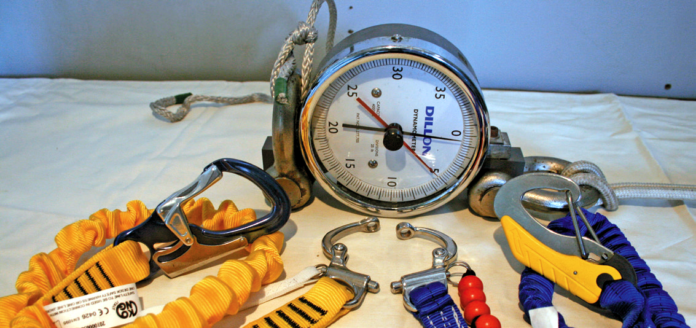Just as we were wrapping up the report in our December issue describing how to make your own safety tether, 60-year-old British sailor Simon Speirs went overboard and died during the Clipper Around the World Race in an accident linked to tether failure. The race, which charges non-professional sailors to race with pro skippers, was already under scrutiny after two deaths in the previous running (see Risk Management and Renting Adventure, PS January 2017).
Regarding the most recent incident, Sir Robin Knox-Johnston, noted offshore sailor and CEO of the event, was reported saying that the tether failed in some form or another. At press time, no further details were available. We will be providing additional information as we become of aware of it.
In the meantime, were reminding readers to familiarize themselves with the care and use of their life jacket harness/tether combination. As we’ve found through more than a dozen separate tests in the past decade, the personal flotation device (PFD)/harness and tether combination is a more complicated piece of equipment than it may at first appear.
1. Life jackets should be either on a person, hooked to their bunk, or otherwise immediately available.
2. Inspect your life jacket every time you put it on and self-test your inflatable at least yearly for leaks. Typically this means inflating the PFD and leaving overnight and noting any significant loss of air.
3. Jacklines and fixed points for clipping in should be oriented so that it is nearly impossible for you to go overboard while clipped in.
4. Use a dedicated two-step, locking hook for connecting to jacklines and fixed points on deck.
5. We recommend a top quality snap-shackle as the harness clip.
6. Evaluate your need for automatic or manual inflation, and know how to disable the auto-inflate function on units that permit this.
7. Know how to orally inflate and manually deflate your inflatable PFD.
8. Wear crotch/thigh straps, especially when embarking on an offshore passage. Know how to deploy and use your spray hood, a key item in big seas.
9. Upgrade your whistle. The Fox whistle did best in our emergency whistle test. (Integral PFD whistles were considered useless.)
10. The sensors on automatic PFD strobe lights must be in the water to work and many are dim. Keep a dedicated MOB strobe on your person at night.
11. Carry a sharp knife or cutting tool for cutting the tether if needed. Quick-release snap-shackles can be impossible release under load.
12. Practice releasing your tethers quick-release mechanism while your harness/PFD is inflated. The pull lanyard on your snap shackle should be on the side of your strongest arm/hand.
13. Never attach the unused boat-end tether clips to the harness. The tether should attach to the harness at one point for quick detachment in an emergency.
14. Personal locator beacons (PLBs), whistles, AIS beacons, and lights that are worn at all times can be lifesavers.
15. Know your jackets maintenance schedule and strictly adhere to it. Make sure it is completely empty of air before repacking.
For more details on safety tethers and PFD/harnesses, the Inside Practical Sailor blogpost features an expanded version of this article with links to our most recent reports. A number of related tests are also available in an Ebook: Man Overboard Prevention and Recovery available in our online bookstore.








































